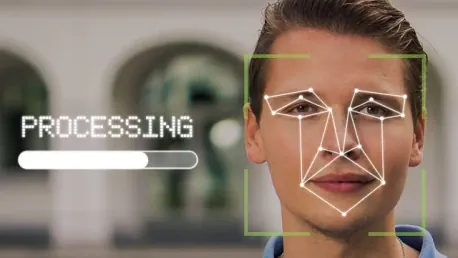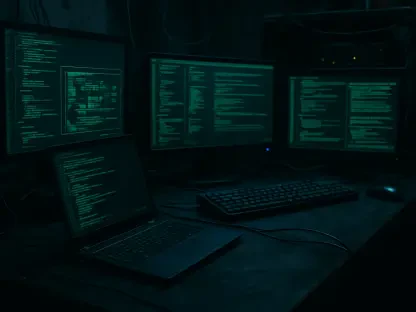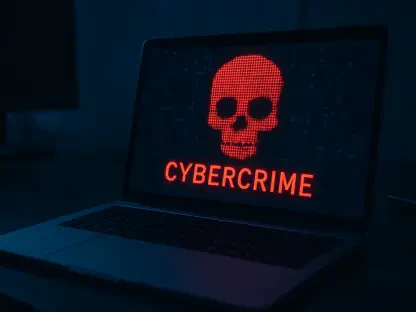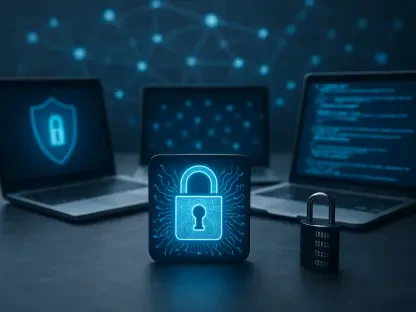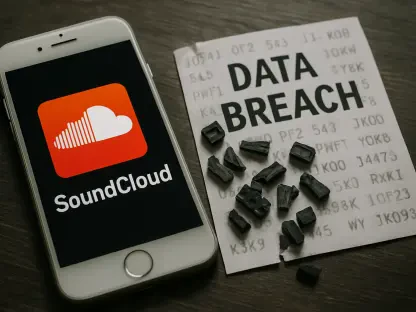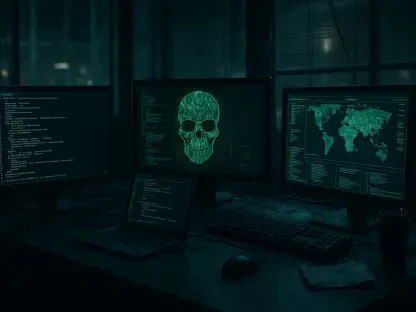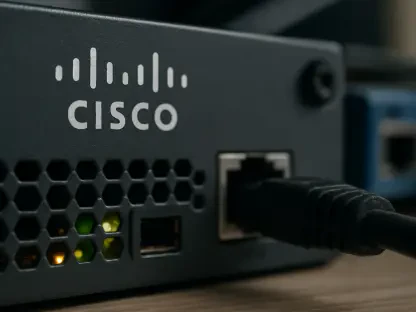In today’s digital age, the rise of deepfake technology poses significant challenges. Deepfakes, which use artificial intelligence to create realistic but fake videos and audio recordings, have become increasingly sophisticated and harder to detect. This article aims to inform readers about how deepfakes are created, their potential misuse, and how one can identify these manipulated media pieces.
Understanding Deepfake Technology
The Evolution of Deepfakes
Deepfakes have evolved significantly in recent years, primarily targeting public figures such as actors, politicians, and singers. Early versions of deepfake technology focused on face-swapping, superimposing a celebrity’s likeness onto someone else’s face in a video sequence. However, with the integration of voice synthesis technology, deepfakes have become more sophisticated and convincing. In tandem with these developments, deepfake creators have refined their techniques to produce smoother and more seamless results, making it ever harder for the casual observer to discern what is real from what is fabricated. This continuous evolution underscores the importance of being deeply attuned to the intricacies of digital content.
The surge in deepfake realism owes much to the advancement of artificial intelligence. Technologies like Generative Adversarial Networks (GANs) and complex deep learning algorithms are at the heart of their creation. These AI systems learn from extensive datasets comprising countless images and audio clips to mimic human likeness with high fidelity. Over time, these algorithms can generate synthetic media that is not only visually convincing but also audibly precise, capable of mimicking subtle intonations and vocal nuances. This level of sophistication presents significant challenges for detection efforts, necessitating a more nuanced approach to identifying these fabricated realities.
The Technology Behind Deepfakes
The sophisticated world of deepfakes leverages advanced artificial intelligence, particularly Generative Adversarial Networks (GANs) and deep learning algorithms, to create highly realistic videos and audio recordings. These technologies work by pitting two neural networks against each other—the generator and the discriminator—in a process of continuous improvement. The generator creates synthetic media, while the discriminator evaluates its authenticity. Through this adversarial process, the generator refines its output, producing increasingly realistic deepfakes. The intricacies of the algorithmic processes involved require significant computing power and expertise, highlighting the ever-evolving capabilities of AI.
As these algorithms grow more advanced, the realm of possibilities for deepfakes expands. Not only can they impersonate well-known personalities, but they can also place these figures in entirely fabricated scenarios that seem plausible. This blurring of lines between reality and fiction poses a profound challenge for media consumers. While these technologies offer creative potential in entertainment and art, their misuse for malicious purposes cannot be overlooked. It is crucial to understand these technologies’ underlying mechanics to better recognize and mitigate their impact.
The Risks and Misuse of Deepfakes
Malicious Purposes
Cybercriminals and hackers use these AI-generated manipulations for various malicious purposes, including extortion, spreading false information, and causing chaos. The evolution of deepfake technology has made it easier to create highly realistic yet fake media, which can deceive even the most discerning viewers. This makes deepfakes a potent tool for those seeking to manipulate public perception or exploit individuals for personal gain. Such misuse extends beyond mere entertainment, as it can lead to severe consequences for those targeted by these deepfake schemes. Public figures are particularly vulnerable, as their digital representations can be effortlessly altered to wreak havoc on their personal lives and careers.
The sophistication of deepfakes has exacerbated their potential for harm. These fabrications can be used to manipulate public opinion by spreading disinformation and creating false narratives that influence political climates or social dynamics. Cybercriminals may also use deepfakes to conduct elaborate schemes like identity theft or financial fraud. By impersonating someone in a deepfake video, they can trick others into divulging sensitive information or transferring funds. The deception capabilities of deepfakes thus represent a formidable threat to individual privacy and security, necessitating heightened vigilance and proactive measures to combat their malicious use.
Impact on Society
Malicious actors can exploit this technology to create content that damages a celebrity’s reputation, spreads false information, or engages in cyberbullying. This misuse can have considerable consequences, affecting public figures and the general public alike. For instance, a deepfake video of a celebrity engaging in controversial behavior can quickly go viral, leading to widespread condemnation and potential damage to their career. Similarly, political figures can be targeted in deepfakes that depict them making inflammatory statements or engaging in unethical behavior, which can influence public opinion and even alter election outcomes.
Beyond the individuals targeted, the broader impact on society is equally concerning. The proliferation of deepfakes can erode public trust in digital media, making it increasingly difficult to discern fact from fiction. This growing skepticism can undermine the credibility of legitimate news sources and fuel the spread of misinformation. Major cybersecurity firms are actively working to mitigate this danger by developing tools capable of detecting the artifacts and mechanisms behind deepfake creations. However, staying ahead of the curve in this technological arms race requires ongoing innovation and vigilance from both technology developers and media consumers.
Identifying Deepfakes: Key Indicators
Close Attention to the Face
Since high-level deepfake manipulations almost always involve facial transformations, it is essential to closely examine the faces of the video’s subjects. One key indicator is the inconsistency in skin appearance, such as overly smooth or excessively wrinkled skin, which can signal the presence of a deepfake. The aging of the skin should also match the aging seen in other areas like hair and eyes. Discrepancies in these details can reveal a digital fabrication, as the algorithms used to generate deepfakes may not perfectly replicate all aspects of human aging.
Another area to scrutinize is the alignment and symmetry of facial features. Deepfakes often struggle with maintaining consistent proportions, leading to subtle distortions in facial structure. Observing these anomalies can provide critical clues when determining the authenticity of a video. Additionally, pay attention to facial expressions and movements. Natural human expressions are complex and nuanced, and any rigidity or unnatural movement can indicate artificial manipulation. These visual cues, though sometimes subtle, can help discern the legitimacy of media content in a landscape increasingly filled with digital deceptions.
Observing the Eyes and Eyebrows
Shadows should appear naturally according to the light source in the scene. Any discrepancies in shadows can suggest artificial manipulation. Deepfakes often struggle to accurately recreate the interplay of light and shadow, leading to unrealistic shadowing effects around the eyes and eyebrows. Additionally, natural eye movement and blinking patterns are challenging to replicate perfectly. If a person blinks too little or too often, it might be a sign of a deepfake. This irregularity can emerge because the algorithms generating these videos may not fully capture the subtleties of human eye behavior.
Another critical aspect is the alignment of the eyes with gaze direction. Deepfakes might falter in accurately rendering where a person is looking, leading to unnatural or mismatched gaze directions. Furthermore, the texture and movement of the eyebrows can also reveal inconsistencies. Eyebrows should follow the natural contours of the face and respond dynamically to expressions. Disparities in the way eyebrows move or shadow can offer vital insights into the video’s authenticity. As one becomes attuned to these details, it becomes easier to identify potential deepfakes and remain cautious about the veracity of digital content.
Checking Glasses and Facial Hair
Glasses often reveal deepfakes through reflections, glare, and angle changes when the person moves. Inaccuracies in these aspects can betray a fake. For instance, the reflection in the lenses may not align correctly with the environment, or the glare and shadows cast by the glasses may appear unnatural. These visual discrepancies, even if subtle, can indicate that the video has been artificially manipulated. Furthermore, the manner in which glasses move in sync with the person’s head movements can also provide clues. If the glasses seem out of sync or exhibit unnatural behavior, they may be part of a deepfake production.
Realistic facial hair is also challenging to replicate. Deepfakes might add or remove mustaches, sideburns, or beards, but these transformations often look unnatural. The texture and flow of facial hair can be difficult for algorithms to imitate perfectly, leading to inconsistencies that may indicate a manipulated video. Observing the edges where the hair meets the skin can reveal signs of digital alteration. Additionally, natural hair movement and growth patterns can be tricky to replicate. If the facial hair appears too static or irregular in texture, it may signal a deepfake. These visual clues, while sometimes subtle, can provide valuable insights when trying to determine the authenticity of a video.
Audio and Lip Movements
Analyzing Lip Movements
The precision of lip-sync technology can vary. Unnatural lip movements can suggest manipulation. Paying close attention to how the lips move in relation to the spoken words can help identify deepfakes. The synchronization of lip movements with speech is a complex process, and any discrepancies in timing or motion can indicate a fabricated video. For instance, if the lips move slightly ahead or behind the audio, it may suggest that the video has been artificially generated. Additionally, the articulation of specific sounds and the way lips form certain shapes can offer further clues. Authentic speech often involves nuanced lip movements that deepfake algorithms may not flawlessly reproduce.
Another aspect to consider is the consistency of facial expressions and their alignment with the audio’s emotional tone. Natural human communication involves a harmonious blend of verbal and non-verbal cues. If there is a mismatch between the expressed emotion and the spoken words, it may be a sign of deepfake manipulation. Moreover, anomalies in the transitions between different facial expressions can also indicate digital tampering. By closely observing these subtleties, one can develop a keener eye for detecting inconsistencies that suggest the presence of deepfake technology.
Listening to the Sound
Listening carefully to the voice is crucial. Any odd background noises or inconsistencies in the audio quality can indicate that the audio was spliced from another source. The ability to replicate a celebrity’s voice in conjunction with their likeness makes these manipulated videos and audio recordings even harder to detect and more believable. However, subtle auditory clues can reveal the video’s true nature. For instance, variations in the audio’s volume, pitch, or tone might suggest that different audio segments have been stitched together. Discrepancies in background sounds, such as ambient noise or echoes, can also provide hints that the audio has been tampered with.
Another key indicator is the natural flow and rhythm of speech. Genuine speech often contains hesitations, pauses, and fluctuations in pace. If the audio sounds too perfect or lacks these natural variations, it may be a sign of deepfake manipulation. Additionally, pay attention to the synchronization between the audio and the visual elements. Any lag or misalignment can suggest that the audio was artificially overlaid onto the video. By honing one’s listening skills and being attuned to these auditory cues, it becomes possible to identify potential deepfakes more effectively.
Practical Tips and Tools
Trusting Your Instincts
While the tips provided are not foolproof, they can help individuals determine whether they are dealing with manipulated or original, legitimate media. Trusting one’s instincts is essential. If something seems off, or if the content appears unrealistic, illogical, or inflammatory, it is wise to remain skeptical. Human intuition can often detect subtleties that tools and algorithms might miss. For instance, an unusually smooth skin texture, mechanical voice quality, or unnatural facial expressions can be early indicators of digital manipulation. Cultivating a healthy sense of skepticism and critical thinking is crucial in today’s digital landscape.
Another practical approach is cross-referencing the content with credible sources. Authentic media typically leaves traces across multiple platforms and reputable outlets. If a shocking or extraordinary piece of content appears only in isolated or dubious sources, it could be a red flag. Moreover, discussing suspicious content with peers or experts can provide additional perspectives and insights, helping to verify its authenticity. By combining instinctual awareness with methodical cross-referencing and consultation, individuals can better navigate the complex terrain of digital media and identify potential deepfakes with greater accuracy.
Utilizing Antivirus Software
In our modern digital world, the emergence of deepfake technology presents considerable challenges. Deepfakes employ artificial intelligence to produce highly realistic yet fraudulent videos and audio clips, making them increasingly advanced and difficult to identify. This poses a threat as the ability to manipulate audio and video can spread misinformation and harm individuals or organizations.
This article serves to enlighten readers about the creation process of deepfakes, the potential dangers they pose, and methods for detecting these altered media. By understanding how deepfakes are produced, we can better recognize their misuse in various scenarios. Bad actors might use them to deceive the public, damage reputations, or commit fraud.
Recognizing deepfakes demands keen observation and sometimes specialized software. Indicators include unnatural facial movements, lighting inconsistencies, or mismatched audio and mouth movements. Increased awareness and technological tools are essential in combating the spread of deepfakes and their potential adverse effects on society. As deepfake technology evolves, so must our strategies and awareness to stay ahead of potential threats.
